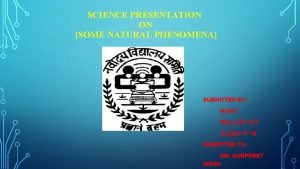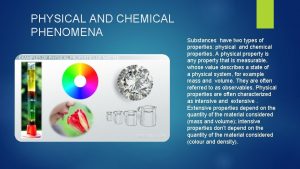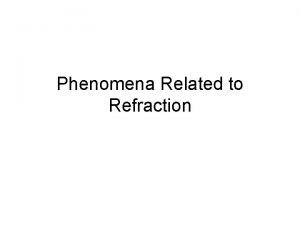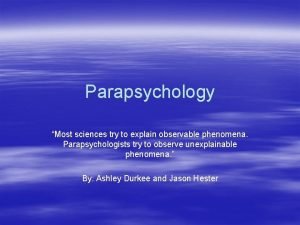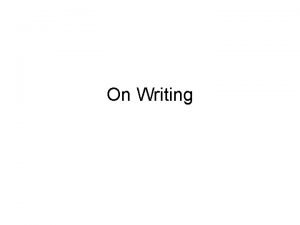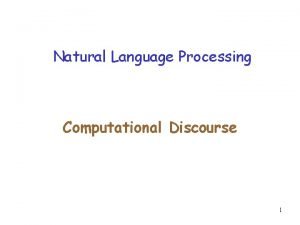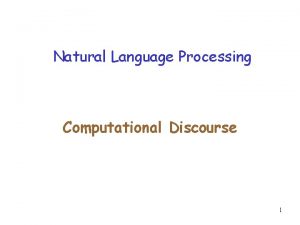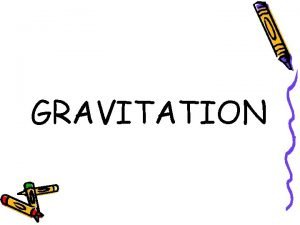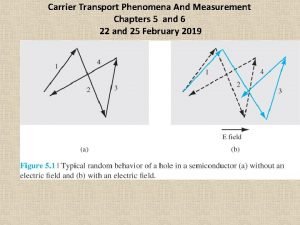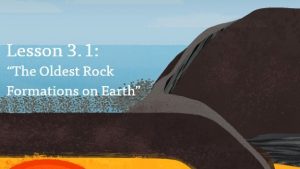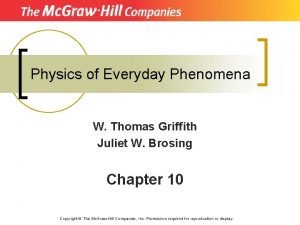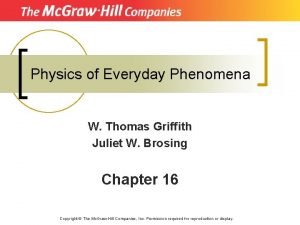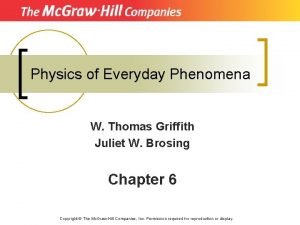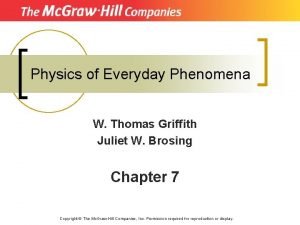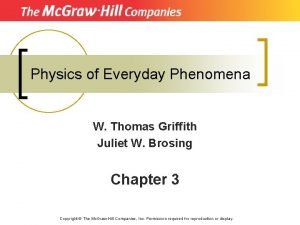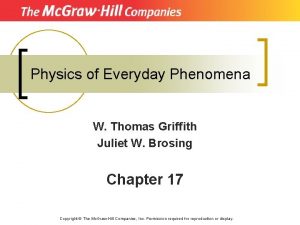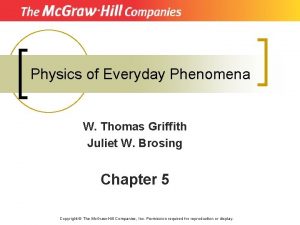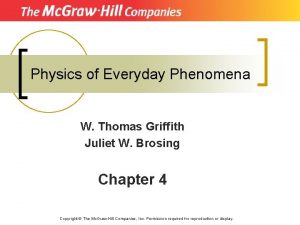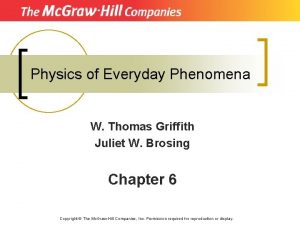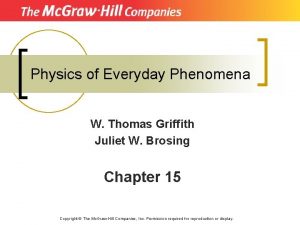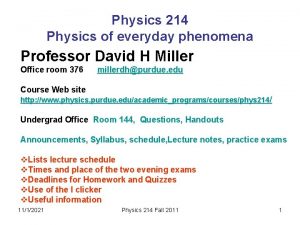Physics of Everyday Phenomena W Thomas Griffith Juliet













- Slides: 13

Physics of Everyday Phenomena W. Thomas Griffith Juliet W. Brosing Chapter 12 Copyright © The Mc. Graw-Hill Companies, Inc. Permission required for reproduction or display.

Question 12. 1 When a glass rod rubbed with silk acquires a positive charge, the silk acquires A) a positive charge B) a negative charge C) no charge D) it is impossible to tell which sign of charge it acquires

Question 12. 2 A rod with a positive charge is brought near a positively charged pith ball. The pith ball is suspended from an insulating string. The pith ball A) will be attracted by the rod B) will be repelled by the rod C) will not be affected by the rod

Question 12. 3 Can you charge an object without actually touching it with another charged object? A) Of course not, you can only charge an object by touching it with something else charged. B) Yes, this is an example of charging by induction. C) Yes, this is an example of charging by convection. D) No, objects do not become charged.

Question 12. 4 If the distance between two point charges is tripled while the size of the charges remains the same, the force between the charges is multiplied by A) 9 B) 3 C) 1/3 D) 1/9

Question 12. 5 If the distance between two point charges remains constant while the size of one of the charges is quadrupled, the force between the charges is multiplied by A) 1/4 B) 2 C) 4 D) 16

Question 12. 6 Two charges with magnitude Q experience a force F when held a distance r apart. What is the force between two charges of magnitude 2 Q held a distance r/2 apart? A) F/4 B) F/2 C) F D) 4 F E) 16 F

Question 12. 7 Which of these is not a possible representation of electric field lines? A) A B) B C) C D) D

Question 12. 8 The field lines due to two spheres with like charges are shown by ___. A) a B) b C) c D) d

Question 12. 9 The figure below shows the equipotential curves around a tree that is struck by lightning. Which cow is most likely to be killed? A) Cow A; it sees a greater potential difference. B) Cow B, because it is at a higher potential. C) Both cows are too close to the tree to live.

Question 12. 10 A charge -q is far away from a charge -Q which is fixed in place. As -q moves closer to -Q, the work done by the electric field is A) positive. B) negative. C) zero.

Question 12. 11 The normal tendency of positive charges is to A) move to regions of higher electric potential B) move to regions of lower electric potential C) remain stationary in an electric field D) move perpendicularly to electric field lines

Answer Key to Chapter 12 1) 2) 3) 4) 5) 6) B B B D C E 7) 8) 9) 10) 11) B B A B B
 Griffith thomas
Griffith thomas Forensic anthropologist vs forensic pathologist
Forensic anthropologist vs forensic pathologist A moose monikko
A moose monikko Ppt on some natural phenomena class 8
Ppt on some natural phenomena class 8 Physical and chemical phenomena
Physical and chemical phenomena Refraction phenomena
Refraction phenomena Observable phenomena psychology
Observable phenomena psychology Objective consideration of contemporary phenomena
Objective consideration of contemporary phenomena Natural language processing
Natural language processing Reference phenomena in nlp
Reference phenomena in nlp Surface phenomena and colloidal system
Surface phenomena and colloidal system Is gravity a natural phenomenon
Is gravity a natural phenomenon Carrier transport phenomena
Carrier transport phenomena Anchor phenomena
Anchor phenomena



